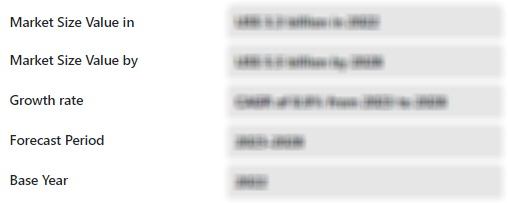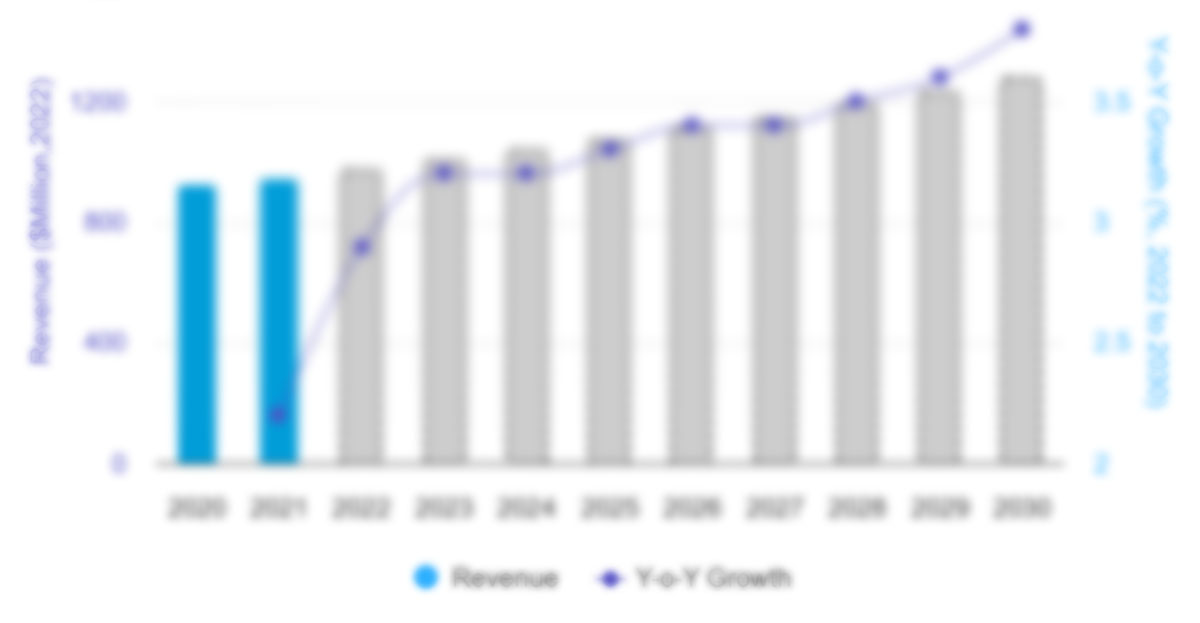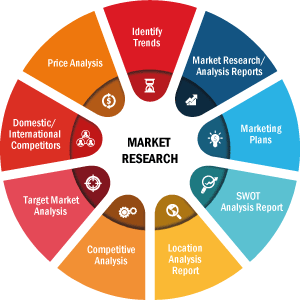The Uveitis Treatment Market is anticipated to expand at a CAGR of 11.7% from 2026 to 2034. Market conditions continue to evolve, leading to new opportunities for stakeholders. The overall landscape reflects stable progress and long-term growth potential.
The Uveitis Treatment Market report covers segmental analysis by Treatment Type (Monoclonal Antibodies, Cycloplegic Agents, Corticosteroids, Immunosuppressants, Antibiotics, Antifungal Drugs, Antivirals, Analgesics); Disease Type (Immediate Uveitis, Posterior Uveitis, Anterior Uveitis, Panuveitis); Cause (Non-Infectious, Infectious); Distribution Channel (Retail, Hospital, Online), and Geography (North America, Europe, Asia Pacific, and South and Central America). The global analysis is further broken down at the regional level and major countries. The report Offers the Value in US$ for the above analysis and segments.
Purpose of the ReportThe report Uveitis Treatment Market by The Insight Partners aims to describe the present landscape and future growth, top driving factors, challenges, and opportunities. This will provide insights to various business stakeholders, such as:
- Technology Providers/Manufacturers: To understand the evolving market dynamics and know the potential growth opportunities, enabling them to make informed strategic decisions.
- Investors: To conduct a comprehensive trend analysis regarding the market growth rate, market financial projections, and opportunities that exist across the value chain.
- Regulatory bodies: To regulate policies and police activities in the market with the aim of minimizing abuse, preserving investor trust and confidence, and upholding the integrity and stability of the market.
- Monoclonal Antibodies
- Cycloplegic Agents
- Corticosteroids
- Immunosuppressants
- Antibiotics
- Antifungal Drugs
- Antivirals
- Analgesics
- Immediate Uveitis
- Posterior Uveitis
- Anterior Uveitis
- Panuveitis
- Non-Infectious
- Infectious
- Retail
- Hospital
- Online
Strategic Insights
Uveitis Treatment Market Growth Drivers- Growing Investment in Ocular Drug Development: With the growing need for more efficient Uveitis treatments, pharmaceutical companies are increasing their investments in ocular drug development. Advances in localized drug delivery systems and sustained-release therapies are ensuring better patient compliance and more effective outcomes. The market sees a positive impact from ongoing clinical trials and novel drug approvals, positioning these therapies as strong contributors to the Uveitis Treatment Market
REGIONAL FRAMEWORK

Have a question?

Mrinal
Mrinal will walk you through a 15-minute call to present the report’s content and answer all queries if you have any.
 Speak to Analyst
MARKET PLAYERS
Speak to Analyst
MARKET PLAYERS- Sample PDF showcases the content structure and the nature of the information with qualitative and quantitative analysis.
- Request discounts available for Start-Ups & Universities
- Sample PDF showcases the content structure and the nature of the information with qualitative and quantitative analysis.
- Request discounts available for Start-Ups & Universities

Report Coverage
Revenue forecast, Company Analysis, Industry landscape, Growth factors, and Trends

Segment Covered
This text is related
to segments covered.

Regional Scope
North America, Europe, Asia Pacific, Middle East & Africa, South & Central America

Country Scope
This text is related
to country scope.
Frequently Asked Questions
The Uveitis Treatment Market is expected to register a CAGR of 11.7% from 2026-2034.
The major factors impacting the Uveitis Treatment Market are: Growing Investment in Ocular Drug Development, Rising Awareness About Uveitis and Early Diagnosis and Expansion of Uveitis Research and Clinical Trials
Key future trends in this market are - Increased Focus on Patient-Reported Outcomes, Regenerative Medicine and Stem Cell Therapies and Collaboration Between Pharmaceutical Companies and Tech Startups
Key companies of this market are: Allergan, Inc., Bausch & Lomb Incorporated, Novartis AG, AbbVie Inc., Santen Pharmaceutical Co., Ltd, Eyegate Pharmaceuticals, Inc., Alimera Sciences, Inc., pSivida Corp., EyePoint Pharmaceuticals, Inc., Santen Pharmaceutical Co.
The report can be delivered in PDF/PPT format; we can also share excel dataset based on the request.
Some of the customization options available based on request are additional 3-5 company profiles and country-specific analysis of 3-5 countries of your choice. Customizations are to be requested/discussed before making final order confirmation, as our team would review the same and check the feasibility.
1. INTRODUCTION
1.1. SCOPE OF THE STUDY
1.2. THE INSIGHT PARTNERS RESEARCH REPORT GUIDANCE
1.3. MARKET SEGMENTATION
1.3.1 Uveitis Treatment Market - By Treatment Type
1.3.2 Uveitis Treatment Market - By Disease Type
1.3.3 Uveitis Treatment Market - By Cause
1.3.4 Uveitis Treatment Market - By Distribution Channel
1.3.5 Uveitis Treatment Market - By Region
1.3.5.1 By Country
2. KEY TAKEAWAYS
3. RESEARCH METHODOLOGY
4. UVEITIS TREATMENT MARKET LANDSCAPE
4.1. OVERVIEW
4.2. PEST ANALYSIS
4.2.1 North America - Pest Analysis
4.2.2 Europe - Pest Analysis
4.2.3 Asia-Pacific - Pest Analysis
4.2.4 Middle East and Africa - Pest Analysis
4.2.5 South and Central America - Pest Analysis
4.3. EXPERT OPINIONS
5. UVEITIS TREATMENT MARKET - KEY MARKET DYNAMICS
5.1. KEY MARKET DRIVERS
5.2. KEY MARKET RESTRAINTS
5.3. KEY MARKET OPPORTUNITIES
5.4. FUTURE TRENDS
5.5. IMPACT ANALYSIS OF DRIVERS AND RESTRAINTS
6. UVEITIS TREATMENT MARKET - GLOBAL MARKET ANALYSIS
6.1. UVEITIS TREATMENT - GLOBAL MARKET OVERVIEW
6.2. UVEITIS TREATMENT - GLOBAL MARKET AND FORECAST TO 2028
6.3. MARKET POSITIONING/MARKET SHARE
7. UVEITIS TREATMENT MARKET - REVENUE AND FORECASTS TO 2028 - TREATMENT TYPE
7.1. OVERVIEW
7.2. TREATMENT TYPE MARKET FORECASTS AND ANALYSIS
7.3. MONOCLONAL ANTIBODIES
7.3.1. Overview
7.3.2. Monoclonal Antibodies Market Forecast and Analysis
7.4. CYCLOPLEGIC AGENTS
7.4.1. Overview
7.4.2. Cycloplegic Agents Market Forecast and Analysis
7.5. CORTICOSTEROIDS
7.5.1. Overview
7.5.2. Corticosteroids Market Forecast and Analysis
7.6. IMMUNOSUPPRESSANTS
7.6.1. Overview
7.6.2. Immunosuppressants Market Forecast and Analysis
7.7. ANTIBIOTICS
7.7.1. Overview
7.7.2. Antibiotics Market Forecast and Analysis
7.8. ANTIFUNGAL DRUGS
7.8.1. Overview
7.8.2. Antifungal Drugs Market Forecast and Analysis
7.9. ANTIVIRALS
7.9.1. Overview
7.9.2. Antivirals Market Forecast and Analysis
7.10. ANALGESICS
7.10.1. Overview
7.10.2. Analgesics Market Forecast and Analysis
8. UVEITIS TREATMENT MARKET - REVENUE AND FORECASTS TO 2028 - DISEASE TYPE
8.1. OVERVIEW
8.2. DISEASE TYPE MARKET FORECASTS AND ANALYSIS
8.3. IMMEDIATE UVEITIS
8.3.1. Overview
8.3.2. Immediate Uveitis Market Forecast and Analysis
8.4. POSTERIOR UVEITIS
8.4.1. Overview
8.4.2. Posterior Uveitis Market Forecast and Analysis
8.5. ANTERIOR UVEITIS
8.5.1. Overview
8.5.2. Anterior Uveitis Market Forecast and Analysis
8.6. PANUVEITIS
8.6.1. Overview
8.6.2. Panuveitis Market Forecast and Analysis
9. UVEITIS TREATMENT MARKET - REVENUE AND FORECASTS TO 2028 - CAUSE
9.1. OVERVIEW
9.2. CAUSE MARKET FORECASTS AND ANALYSIS
9.3. NON-INFECTIOUS
9.3.1. Overview
9.3.2. Non-Infectious Market Forecast and Analysis
9.4. INFECTIOUS
9.4.1. Overview
9.4.2. Infectious Market Forecast and Analysis
10. UVEITIS TREATMENT MARKET - REVENUE AND FORECASTS TO 2028 - DISTRIBUTION CHANNEL
10.1. OVERVIEW
10.2. DISTRIBUTION CHANNEL MARKET FORECASTS AND ANALYSIS
10.3. RETAIL
10.3.1. Overview
10.3.2. Retail Market Forecast and Analysis
10.4. HOSPITAL
10.4.1. Overview
10.4.2. Hospital Market Forecast and Analysis
10.5. ONLINE
10.5.1. Overview
10.5.2. Online Market Forecast and Analysis
11. UVEITIS TREATMENT MARKET REVENUE AND FORECASTS TO 2028 - GEOGRAPHICAL ANALYSIS
11.1. NORTH AMERICA
11.1.1 North America Uveitis Treatment Market Overview
11.1.2 North America Uveitis Treatment Market Forecasts and Analysis
11.1.3 North America Uveitis Treatment Market Forecasts and Analysis - By Treatment Type
11.1.4 North America Uveitis Treatment Market Forecasts and Analysis - By Disease Type
11.1.5 North America Uveitis Treatment Market Forecasts and Analysis - By Cause
11.1.6 North America Uveitis Treatment Market Forecasts and Analysis - By Distribution Channel
11.1.7 North America Uveitis Treatment Market Forecasts and Analysis - By Countries
11.1.7.1 United States Uveitis Treatment Market
11.1.7.1.1 United States Uveitis Treatment Market by Treatment Type
11.1.7.1.2 United States Uveitis Treatment Market by Disease Type
11.1.7.1.3 United States Uveitis Treatment Market by Cause
11.1.7.1.4 United States Uveitis Treatment Market by Distribution Channel
11.1.7.2 Canada Uveitis Treatment Market
11.1.7.2.1 Canada Uveitis Treatment Market by Treatment Type
11.1.7.2.2 Canada Uveitis Treatment Market by Disease Type
11.1.7.2.3 Canada Uveitis Treatment Market by Cause
11.1.7.2.4 Canada Uveitis Treatment Market by Distribution Channel
11.1.7.3 Mexico Uveitis Treatment Market
11.1.7.3.1 Mexico Uveitis Treatment Market by Treatment Type
11.1.7.3.2 Mexico Uveitis Treatment Market by Disease Type
11.1.7.3.3 Mexico Uveitis Treatment Market by Cause
11.1.7.3.4 Mexico Uveitis Treatment Market by Distribution Channel
11.2. EUROPE
11.2.1 Europe Uveitis Treatment Market Overview
11.2.2 Europe Uveitis Treatment Market Forecasts and Analysis
11.2.3 Europe Uveitis Treatment Market Forecasts and Analysis - By Treatment Type
11.2.4 Europe Uveitis Treatment Market Forecasts and Analysis - By Disease Type
11.2.5 Europe Uveitis Treatment Market Forecasts and Analysis - By Cause
11.2.6 Europe Uveitis Treatment Market Forecasts and Analysis - By Distribution Channel
11.2.7 Europe Uveitis Treatment Market Forecasts and Analysis - By Countries
11.2.7.1 Germany Uveitis Treatment Market
11.2.7.1.1 Germany Uveitis Treatment Market by Treatment Type
11.2.7.1.2 Germany Uveitis Treatment Market by Disease Type
11.2.7.1.3 Germany Uveitis Treatment Market by Cause
11.2.7.1.4 Germany Uveitis Treatment Market by Distribution Channel
11.2.7.2 France Uveitis Treatment Market
11.2.7.2.1 France Uveitis Treatment Market by Treatment Type
11.2.7.2.2 France Uveitis Treatment Market by Disease Type
11.2.7.2.3 France Uveitis Treatment Market by Cause
11.2.7.2.4 France Uveitis Treatment Market by Distribution Channel
11.2.7.3 Italy Uveitis Treatment Market
11.2.7.3.1 Italy Uveitis Treatment Market by Treatment Type
11.2.7.3.2 Italy Uveitis Treatment Market by Disease Type
11.2.7.3.3 Italy Uveitis Treatment Market by Cause
11.2.7.3.4 Italy Uveitis Treatment Market by Distribution Channel
11.2.7.4 Spain Uveitis Treatment Market
11.2.7.4.1 Spain Uveitis Treatment Market by Treatment Type
11.2.7.4.2 Spain Uveitis Treatment Market by Disease Type
11.2.7.4.3 Spain Uveitis Treatment Market by Cause
11.2.7.4.4 Spain Uveitis Treatment Market by Distribution Channel
11.2.7.5 United Kingdom Uveitis Treatment Market
11.2.7.5.1 United Kingdom Uveitis Treatment Market by Treatment Type
11.2.7.5.2 United Kingdom Uveitis Treatment Market by Disease Type
11.2.7.5.3 United Kingdom Uveitis Treatment Market by Cause
11.2.7.5.4 United Kingdom Uveitis Treatment Market by Distribution Channel
11.2.7.6 Rest of Europe Uveitis Treatment Market
11.2.7.6.1 Rest of Europe Uveitis Treatment Market by Treatment Type
11.2.7.6.2 Rest of Europe Uveitis Treatment Market by Disease Type
11.2.7.6.3 Rest of Europe Uveitis Treatment Market by Cause
11.2.7.6.4 Rest of Europe Uveitis Treatment Market by Distribution Channel
11.3. ASIA-PACIFIC
11.3.1 Asia-Pacific Uveitis Treatment Market Overview
11.3.2 Asia-Pacific Uveitis Treatment Market Forecasts and Analysis
11.3.3 Asia-Pacific Uveitis Treatment Market Forecasts and Analysis - By Treatment Type
11.3.4 Asia-Pacific Uveitis Treatment Market Forecasts and Analysis - By Disease Type
11.3.5 Asia-Pacific Uveitis Treatment Market Forecasts and Analysis - By Cause
11.3.6 Asia-Pacific Uveitis Treatment Market Forecasts and Analysis - By Distribution Channel
11.3.7 Asia-Pacific Uveitis Treatment Market Forecasts and Analysis - By Countries
11.3.7.1 Australia Uveitis Treatment Market
11.3.7.1.1 Australia Uveitis Treatment Market by Treatment Type
11.3.7.1.2 Australia Uveitis Treatment Market by Disease Type
11.3.7.1.3 Australia Uveitis Treatment Market by Cause
11.3.7.1.4 Australia Uveitis Treatment Market by Distribution Channel
11.3.7.2 China Uveitis Treatment Market
11.3.7.2.1 China Uveitis Treatment Market by Treatment Type
11.3.7.2.2 China Uveitis Treatment Market by Disease Type
11.3.7.2.3 China Uveitis Treatment Market by Cause
11.3.7.2.4 China Uveitis Treatment Market by Distribution Channel
11.3.7.3 India Uveitis Treatment Market
11.3.7.3.1 India Uveitis Treatment Market by Treatment Type
11.3.7.3.2 India Uveitis Treatment Market by Disease Type
11.3.7.3.3 India Uveitis Treatment Market by Cause
11.3.7.3.4 India Uveitis Treatment Market by Distribution Channel
11.3.7.4 Japan Uveitis Treatment Market
11.3.7.4.1 Japan Uveitis Treatment Market by Treatment Type
11.3.7.4.2 Japan Uveitis Treatment Market by Disease Type
11.3.7.4.3 Japan Uveitis Treatment Market by Cause
11.3.7.4.4 Japan Uveitis Treatment Market by Distribution Channel
11.3.7.5 South Korea Uveitis Treatment Market
11.3.7.5.1 South Korea Uveitis Treatment Market by Treatment Type
11.3.7.5.2 South Korea Uveitis Treatment Market by Disease Type
11.3.7.5.3 South Korea Uveitis Treatment Market by Cause
11.3.7.5.4 South Korea Uveitis Treatment Market by Distribution Channel
11.3.7.6 Rest of Asia-Pacific Uveitis Treatment Market
11.3.7.6.1 Rest of Asia-Pacific Uveitis Treatment Market by Treatment Type
11.3.7.6.2 Rest of Asia-Pacific Uveitis Treatment Market by Disease Type
11.3.7.6.3 Rest of Asia-Pacific Uveitis Treatment Market by Cause
11.3.7.6.4 Rest of Asia-Pacific Uveitis Treatment Market by Distribution Channel
11.4. MIDDLE EAST AND AFRICA
11.4.1 Middle East and Africa Uveitis Treatment Market Overview
11.4.2 Middle East and Africa Uveitis Treatment Market Forecasts and Analysis
11.4.3 Middle East and Africa Uveitis Treatment Market Forecasts and Analysis - By Treatment Type
11.4.4 Middle East and Africa Uveitis Treatment Market Forecasts and Analysis - By Disease Type
11.4.5 Middle East and Africa Uveitis Treatment Market Forecasts and Analysis - By Cause
11.4.6 Middle East and Africa Uveitis Treatment Market Forecasts and Analysis - By Distribution Channel
11.4.7 Middle East and Africa Uveitis Treatment Market Forecasts and Analysis - By Countries
11.4.7.1 South Africa Uveitis Treatment Market
11.4.7.1.1 South Africa Uveitis Treatment Market by Treatment Type
11.4.7.1.2 South Africa Uveitis Treatment Market by Disease Type
11.4.7.1.3 South Africa Uveitis Treatment Market by Cause
11.4.7.1.4 South Africa Uveitis Treatment Market by Distribution Channel
11.4.7.2 Saudi Arabia Uveitis Treatment Market
11.4.7.2.1 Saudi Arabia Uveitis Treatment Market by Treatment Type
11.4.7.2.2 Saudi Arabia Uveitis Treatment Market by Disease Type
11.4.7.2.3 Saudi Arabia Uveitis Treatment Market by Cause
11.4.7.2.4 Saudi Arabia Uveitis Treatment Market by Distribution Channel
11.4.7.3 U.A.E Uveitis Treatment Market
11.4.7.3.1 U.A.E Uveitis Treatment Market by Treatment Type
11.4.7.3.2 U.A.E Uveitis Treatment Market by Disease Type
11.4.7.3.3 U.A.E Uveitis Treatment Market by Cause
11.4.7.3.4 U.A.E Uveitis Treatment Market by Distribution Channel
11.4.7.4 Rest of Middle East and Africa Uveitis Treatment Market
11.4.7.4.1 Rest of Middle East and Africa Uveitis Treatment Market by Treatment Type
11.4.7.4.2 Rest of Middle East and Africa Uveitis Treatment Market by Disease Type
11.4.7.4.3 Rest of Middle East and Africa Uveitis Treatment Market by Cause
11.4.7.4.4 Rest of Middle East and Africa Uveitis Treatment Market by Distribution Channel
11.5. SOUTH AND CENTRAL AMERICA
11.5.1 South and Central America Uveitis Treatment Market Overview
11.5.2 South and Central America Uveitis Treatment Market Forecasts and Analysis
11.5.3 South and Central America Uveitis Treatment Market Forecasts and Analysis - By Treatment Type
11.5.4 South and Central America Uveitis Treatment Market Forecasts and Analysis - By Disease Type
11.5.5 South and Central America Uveitis Treatment Market Forecasts and Analysis - By Cause
11.5.6 South and Central America Uveitis Treatment Market Forecasts and Analysis - By Distribution Channel
11.5.7 South and Central America Uveitis Treatment Market Forecasts and Analysis - By Countries
11.5.7.1 Brazil Uveitis Treatment Market
11.5.7.1.1 Brazil Uveitis Treatment Market by Treatment Type
11.5.7.1.2 Brazil Uveitis Treatment Market by Disease Type
11.5.7.1.3 Brazil Uveitis Treatment Market by Cause
11.5.7.1.4 Brazil Uveitis Treatment Market by Distribution Channel
11.5.7.2 Argentina Uveitis Treatment Market
11.5.7.2.1 Argentina Uveitis Treatment Market by Treatment Type
11.5.7.2.2 Argentina Uveitis Treatment Market by Disease Type
11.5.7.2.3 Argentina Uveitis Treatment Market by Cause
11.5.7.2.4 Argentina Uveitis Treatment Market by Distribution Channel
11.5.7.3 Rest of South and Central America Uveitis Treatment Market
11.5.7.3.1 Rest of South and Central America Uveitis Treatment Market by Treatment Type
11.5.7.3.2 Rest of South and Central America Uveitis Treatment Market by Disease Type
11.5.7.3.3 Rest of South and Central America Uveitis Treatment Market by Cause
11.5.7.3.4 Rest of South and Central America Uveitis Treatment Market by Distribution Channel
12. IMPACT OF COVID-19 PANDEMIC ON GLOBAL UVEITIS TREATMENT MARKET
12.1 North America
12.2 Europe
12.3 Asia-Pacific
12.4 Middle East and Africa
12.5 South and Central America
13. INDUSTRY LANDSCAPE
13.1. MERGERS AND ACQUISITIONS
13.2. AGREEMENTS, COLLABORATIONS AND JOIN VENTURES
13.3. NEW PRODUCT LAUNCHES
13.4. EXPANSIONS AND OTHER STRATEGIC DEVELOPMENTS
14. UVEITIS TREATMENT MARKET, KEY COMPANY PROFILES
14.1. ALLERGAN, INC.
14.1.1. Key Facts
14.1.2. Business Description
14.1.3. Products and Services
14.1.4. Financial Overview
14.1.5. SWOT Analysis
14.1.6. Key Developments
14.2. BAUSCH AND LOMB INCORPORATED.
14.2.1. Key Facts
14.2.2. Business Description
14.2.3. Products and Services
14.2.4. Financial Overview
14.2.5. SWOT Analysis
14.2.6. Key Developments
14.3. NOVARTIS AG
14.3.1. Key Facts
14.3.2. Business Description
14.3.3. Products and Services
14.3.4. Financial Overview
14.3.5. SWOT Analysis
14.3.6. Key Developments
14.4. ABBVIE INC.
14.4.1. Key Facts
14.4.2. Business Description
14.4.3. Products and Services
14.4.4. Financial Overview
14.4.5. SWOT Analysis
14.4.6. Key Developments
14.5. SANTEN PHARMACEUTICAL CO., LTD
14.5.1. Key Facts
14.5.2. Business Description
14.5.3. Products and Services
14.5.4. Financial Overview
14.5.5. SWOT Analysis
14.5.6. Key Developments
14.6. EYEGATE PHARMACEUTICALS, INC.
14.6.1. Key Facts
14.6.2. Business Description
14.6.3. Products and Services
14.6.4. Financial Overview
14.6.5. SWOT Analysis
14.6.6. Key Developments
14.7. ALIMERA SCIENCES, INC.
14.7.1. Key Facts
14.7.2. Business Description
14.7.3. Products and Services
14.7.4. Financial Overview
14.7.5. SWOT Analysis
14.7.6. Key Developments
14.8. PSIVIDA CORP.
14.8.1. Key Facts
14.8.2. Business Description
14.8.3. Products and Services
14.8.4. Financial Overview
14.8.5. SWOT Analysis
14.8.6. Key Developments
14.9. EYEPOINT PHARMACEUTICALS, INC.
14.9.1. Key Facts
14.9.2. Business Description
14.9.3. Products and Services
14.9.4. Financial Overview
14.9.5. SWOT Analysis
14.9.6. Key Developments
14.10. SANTEN PHARMACEUTICAL CO.
14.10.1. Key Facts
14.10.2. Business Description
14.10.3. Products and Services
14.10.4. Financial Overview
14.10.5. SWOT Analysis
14.10.6. Key Developments
15. APPENDIX
15.1. ABOUT THE INSIGHT PARTNERS
15.2. GLOSSARY OF TERMS
Yes! We provide a free sample of the report, which includes Report Scope (Table of Contents), report structure, and selected insights to help you assess the value of the full report. Please click on the "Download Sample" button or contact us to receive your copy.
Absolutely - analyst assistance is part of the package. You can connect with our analyst post-purchase to clarify report insights, methodology or discuss how the findings apply to your business needs.
Once your order is successfully placed, you will receive a confirmation email along with your invoice.
• For published reports: You'll receive access to the report within 4-6 working hours via a secured email sent to your email.
• For upcoming reports: Your order will be recorded as a pre-booking. Our team will share the estimated release date and keep you informed of any updates. As soon as the report is published, it will be delivered to your registered email.
We offer customization options to align the report with your specific objectives. Whether you need deeper insights into a particular region, industry segment, competitor analysis, or data cut, our research team can tailor the report accordingly. Please share your requirements with us, and we'll be happy to provide a customized proposal or scope.
The report is available in either PDF format or as an Excel dataset, depending on the license you choose.
The PDF version provides the full analysis and visuals in a ready-to-read format. The Excel dataset includes all underlying data tables for easy manipulation and further analysis.
Please review the license options at checkout or contact us to confirm which formats are included with your purchase.
Our payment process is fully secure and PCI-DSS compliant.
We use trusted and encrypted payment gateways to ensure that all transactions are protected with industry-standard SSL encryption. Your payment details are never stored on our servers and are handled securely by certified third-party processors.
You can make your purchase with confidence, knowing your personal and financial information is safe with us.
Yes, we do offer special pricing for bulk purchases.
If you're interested in purchasing multiple reports, we're happy to provide a customized bundle offer or volume-based discount tailored to your needs. Please contact our sales team with the list of reports you're considering, and we'll share a personalized quote.
Yes, absolutely.
Our team is available to help you make an informed decision. Whether you have questions about the report's scope, methodology, customization options, or which license suits you best, we're here to assist. Please reach out to us at sales@theinsightpartners.com, and one of our representatives will get in touch promptly.
Yes, a billing invoice will be automatically generated and sent to your registered email upon successful completion of your purchase.
If you need the invoice in a specific format or require additional details (such as company name, GST, or VAT information), feel free to contact us, and we'll be happy to assist.
Yes, certainly.
If you encounter any difficulties accessing or receiving your report, our support team is ready to assist you. Simply reach out to us via email or live chat with your order information, and we'll ensure the issue is resolved quickly so you can access your report without interruption.
The Insight Partners performs research in 4 major stages: Data Collection & Secondary Research, Primary Research, Data Analysis and Data Triangulation & Final Review.
- Data Collection and Secondary Research:
As a market research and consulting firm operating from a decade, we have published many reports and advised several clients across the globe. First step for any study will start with an assessment of currently available data and insights from existing reports. Further, historical and current market information is collected from Investor Presentations, Annual Reports, SEC Filings, etc., and other information related to company’s performance and market positioning are gathered from Paid Databases (Factiva, Hoovers, and Reuters) and various other publications available in public domain.
Several associations trade associates, technical forums, institutes, societies and organizations are accessed to gain technical as well as market related insights through their publications such as research papers, blogs and press releases related to the studies are referred to get cues about the market. Further, white papers, journals, magazines, and other news articles published in the last 3 years are scrutinized and analyzed to understand the current market trends.
- Primary Research:
The primarily interview analysis comprise of data obtained from industry participants interview and answers to survey questions gathered by in-house primary team.
For primary research, interviews are conducted with industry experts/CEOs/Marketing Managers/Sales Managers/VPs/Subject Matter Experts from both demand and supply side to get a 360-degree view of the market. The primary team conducts several interviews based on the complexity of the markets to understand the various market trends and dynamics which makes research more credible and precise.
A typical research interview fulfils the following functions:
- Provides first-hand information on the market size, market trends, growth trends, competitive landscape, and outlook
- Validates and strengthens in-house secondary research findings
- Develops the analysis team’s expertise and market understanding
Primary research involves email interactions and telephone interviews for each market, category, segment, and sub-segment across geographies. The participants who typically take part in such a process include, but are not limited to:
- Industry participants: VPs, business development managers, market intelligence managers and national sales managers
- Outside experts: Valuation experts, research analysts and key opinion leaders specializing in the electronics and semiconductor industry.
Below is the breakup of our primary respondents by company, designation, and region:

Once we receive the confirmation from primary research sources or primary respondents, we finalize the base year market estimation and forecast the data as per the macroeconomic and microeconomic factors assessed during data collection.
- Data Analysis:
Once data is validated through both secondary as well as primary respondents, we finalize the market estimations by hypothesis formulation and factor analysis at regional and country level.
- 3.1 Macro-Economic Factor Analysis:
We analyse macroeconomic indicators such the gross domestic product (GDP), increase in the demand for goods and services across industries, technological advancement, regional economic growth, governmental policies, the influence of COVID-19, PEST analysis, and other aspects. This analysis aids in setting benchmarks for various nations/regions and approximating market splits. Additionally, the general trend of the aforementioned components aid in determining the market's development possibilities.
- 3.2 Country Level Data:
Various factors that are especially aligned to the country are taken into account to determine the market size for a certain area and country, including the presence of vendors, such as headquarters and offices, the country's GDP, demand patterns, and industry growth. To comprehend the market dynamics for the nation, a number of growth variables, inhibitors, application areas, and current market trends are researched. The aforementioned elements aid in determining the country's overall market's growth potential.
- 3.3 Company Profile:
The “Table of Contents” is formulated by listing and analyzing more than 25 - 30 companies operating in the market ecosystem across geographies. However, we profile only 10 companies as a standard practice in our syndicate reports. These 10 companies comprise leading, emerging, and regional players. Nonetheless, our analysis is not restricted to the 10 listed companies, we also analyze other companies present in the market to develop a holistic view and understand the prevailing trends. The “Company Profiles” section in the report covers key facts, business description, products & services, financial information, SWOT analysis, and key developments. The financial information presented is extracted from the annual reports and official documents of the publicly listed companies. Upon collecting the information for the sections of respective companies, we verify them via various primary sources and then compile the data in respective company profiles. The company level information helps us in deriving the base number as well as in forecasting the market size.
- 3.4 Developing Base Number:
Aggregation of sales statistics (2020-2022) and macro-economic factor, and other secondary and primary research insights are utilized to arrive at base number and related market shares for 2022. The data gaps are identified in this step and relevant market data is analyzed, collected from paid primary interviews or databases. On finalizing the base year market size, forecasts are developed on the basis of macro-economic, industry and market growth factors and company level analysis.
- Data Triangulation and Final Review:
The market findings and base year market size calculations are validated from supply as well as demand side. Demand side validations are based on macro-economic factor analysis and benchmarks for respective regions and countries. In case of supply side validations, revenues of major companies are estimated (in case not available) based on industry benchmark, approximate number of employees, product portfolio, and primary interviews revenues are gathered. Further revenue from target product/service segment is assessed to avoid overshooting of market statistics. In case of heavy deviations between supply and demand side values, all thes steps are repeated to achieve synchronization.
We follow an iterative model, wherein we share our research findings with Subject Matter Experts (SME’s) and Key Opinion Leaders (KOLs) until consensus view of the market is not formulated – this model negates any drastic deviation in the opinions of experts. Only validated and universally acceptable research findings are quoted in our reports.
We have important check points that we use to validate our research findings – which we call – data triangulation, where we validate the information, we generate from secondary sources with primary interviews and then we re-validate with our internal data bases and Subject matter experts. This comprehensive model enables us to deliver high quality, reliable data in shortest possible time.





 Get Free Sample For
Get Free Sample For